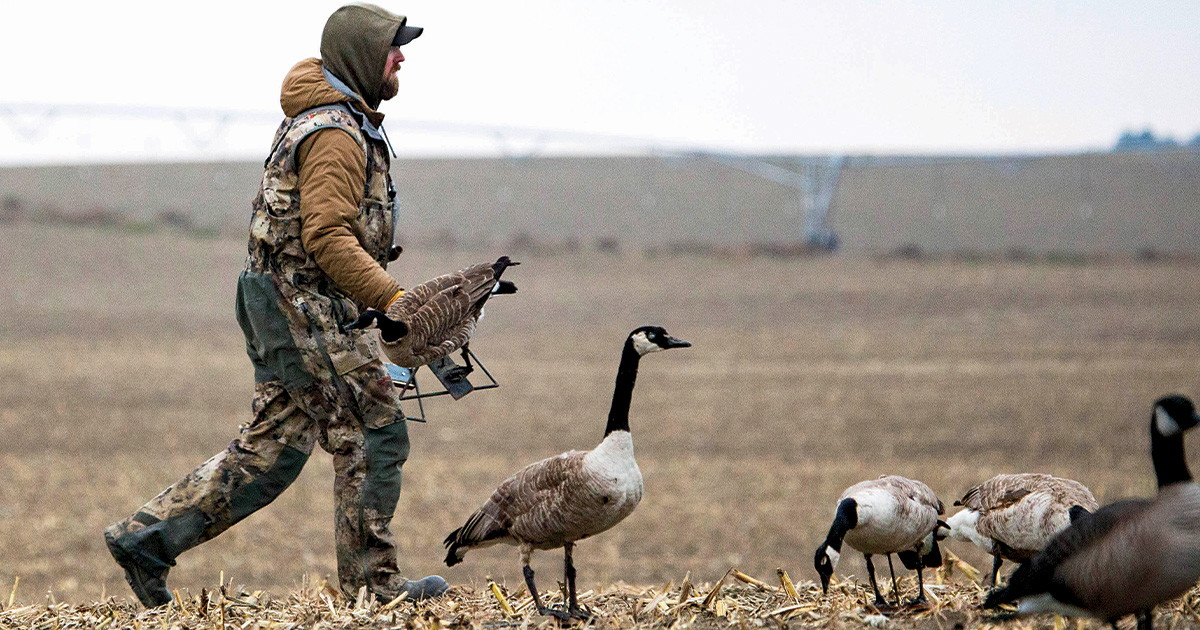Waterfowler's World: The Real Deal
Stuffers just might be the most effective goose decoys ever devised
Stuffers just might be the most effective goose decoys ever devised

By Bill Buckley

A spread of decoys made from actual birds is the ultimate in realism. You can make your own stuffers from ducks and geese that you have harvested or have a taxidermist do it for you.
Today’s top-end goose decoys are amazingly realistic. And, because goose hunters and decoy manufacturers are always searching for the next game changer, you have to wonder how much more lifelike decoys can get. While most of us eagerly await the latest improvements in realism, some hunters are turning to the past. Long before plastic was ever associated with decoys, hunters used mounted geese, or “stuffers,” to fool educated birds, and some hunters still swear by them today.
Bill Saunders, of Bill Saunders Calls and Gear, operates a guide service in the Columbia Basin of southeast Washington. For the past 25 years, stuffers have been his go-to decoys for consistently putting clients on birds. “Stuffers are hands down the best,” he says. “Geese are much more relaxed working around them and more apt to finish in the middle of the spread. You can typically get them to do things they wouldn’t normally do over plastic decoys.”
The reason is simple. “Even the best flocked decoy can’t match a goose’s natural color and sheen in any light condition,” Saunders says. “And that’s what makes stuffers so lethal. Frankly, they don’t have to be perfect taxidermy specimens, because it’s the sheen and coloration the geese key in on.”
As Saunders likes to say, stuffers take the guesswork out of the decoying equation. “There are only a few things you can control: your hide, your decoys, and your calling. The only way stuffers fail is if we’ve been hunting the same pit a lot and setting the spread the same way for consecutive days.”
Stuffers do have limitations. In inclement weather, when natural feathers collect moisture, Saunders switches to plastic decoys. He’ll also opt for plastic when transportation space is tight. “Last season I hunted a spot that we couldn’t access with a trailer,” he says. “So I crammed as many plastic decoys in my truck as I could. We had some great hunts, but the geese eventually caught on. So we replaced the plastic decoys with a much smaller spread of stuffers, and it was like opening day again. Having a different look when the geese wise up is huge.”
You can have a taxidermist create stuffers from birds that you have bagged, or you can do it yourself. In either case, for best results, handle harvested birds as gingerly as you would if you were having them mounted to display in your home. If you prepare the skins yourself, be sure to remove all the meat but leave the fat on the underside of the skin and do not clean them with white gas. The natural oils in the fat make stuffers more resilient and will prevent the skin from cracking if they ever get wet.
For DIY hunters, Research Mannikins Taxidermy Supply or Van Dyke’s Taxidermy Supply have everything you’ll need, and YouTube has some excellent how-to videos. Unlike birds mounted for your home, stuffers require substantially heavier-gauge wire for the legs and neck to prevent them from flexing and cracking in transit and in the field. For bases, Saunders uses 12-inch-by-12-inch painted rebar, which is more stable and easier to conceal than plywood. Standard upright and feeder positions travel best and fit more compactly.
Saunders uses a rack system in his decoy trailer to keep stuffers from banging or rubbing against each other while in transit. He also grooms his stuffers throughout the season, taking care to put feathers back in place and to dust them off if they get dirty. During the off-season, Saunders advises storing stuffers in a safe place with low humidity and where mice and other varmints won’t get into them.
“Some guys complain that stuffers are too much work,” Saunders says. “With proper care, stuffers are no more difficult to maintain than plastic decoys. Some of mine are 20 years old. And even when they’re that old, day in and day out they’ll outperform the best flocked full-bodies every time. There’s absolutely no comparison.”
Ducks Unlimited uses cookies to enhance your browsing experience, optimize site functionality, analyze traffic, and deliver personalized advertising through third parties. By continuing to use this site, you agree to our use of cookies. View Privacy Policy